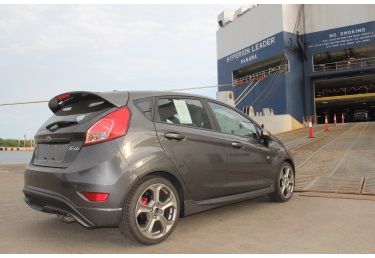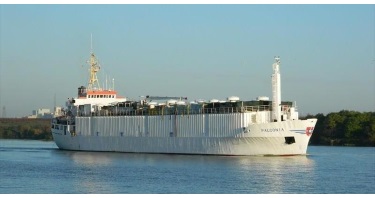Port Traffic Trends: Houston, Lázaro Cárdenas, Olympia
![]() Print this Article | Send to Colleague
Print this Article | Send to Colleague
Port of Houston Authority on Pace for a Record Year
"Operations continue to perform efficiently and effectively for the benefit of our customers and stakeholders that use the Port of Houston Authority facilities," Executive Director Roger Guenther told the Port Commission of the Port of Houston Authority at its regular monthly meeting on October 27.
Mr. Guenther reported that that the container terminals, which handle the majority of cargo tonnage crossing port authority wharves, continue to operate at record levels, with loaded container units up 14 percent from January-September 2014 and total throughput of loaded and empty containers likely "to surpass 2 million TEUs this year for the first time in [the port’s] history."
In October, Bayport Container Terminal recorded the highest number of gate moves in a single day for either of the port authority container terminals at 4,300 transactions. Customers still experienced excellent service levels, including low truck turn times, the port authority noted.
During that same meeting, the port commission accepted staff’s recommendation that tariff rates remain unchanged in 2016. At the same time, port authority staff committed to improving efficiencies, maintaining a high level of service and continuing to fund infrastructure investments.
The port commission demonstrated its commitment to invest in infrastructure by awarding a contract to purchase three dockside electric cranes for Barbours Cut Container Terminal.
Additionally, the port commission approved entering into a feasibility cost share agreement with the U.S. Army Corps of Engineers for improvements to the Houston Ship Channel and tributaries. The port authority was one of three ports nationwide selected for a congressional study for potential improvements. "We are investing in the future as we prepare for opportunities ahead to strengthen the Port of Houston’s position in the Gulf," said Mr. Guenther.
Mexico: Lázaro Cárdenas’ First Time Ford Exports to the United States
Ford autos are being exported to the United States for the first time ever from Mexico’s Pacific coast Port of Lázaro Cárdenas.The initial shipment of 68 autos – including the models Fiesta 4 DR/Sedan, Fiesta Hatchbacks 5 DR and Fiesta Titanium 5 DR – was loaded last month aboard the NYK car carrier Hyperion Leader V-56 bound for the Port of Portland (OR).
The autos were assembled at Ford Motor Company S.A. de C.V. plant in Cuautitlán Izcalli, a city in the state of Mexico about 225 miles from the port.
Lazaro Cardenas is Mexico’s leading west coast port handler of auto imports and exports, with volume for 2015 through September up 21 percent from a year ago to 264,918 vehicle units.

Ford Fiesta being driven aboard the Hyperion Leader V-56 in Lázaro Cárdenas for export to the United States.
Photo/API de Lázaro Cárdenas
Olympia Marine Terminal to Load Dairy Cattle Bound for Vietnam
The Port of Olympia is scheduled to load 1,400 head of dairy cattle in late November for export to Vietnam on the livestock carrier M/V Falconia.
Vietnam purchased the heifers in support of its campaign to minimize childhood malnourishment by providing "one glass of milk per child per day."
The cattle will come from Idaho and Washington farms. They will first stop for 28-day quarantine at a United States Department of Agriculture (USDA) approved farm facility for observation by veterinarians prior to export. They will then be transported to the port, where they will board the ship via a specialized platform and gangway that ensures no hoof touches the dock. The loading process is expected to last two days.
The cattle will be accompanied by a veterinarian on board during their two-week voyage to Vietnam. According to the port, the USDA has vetted all links in the supply chain to ensure the animals are humanely handled. The port hopes that this operation will encourage other livestock exporters to consider using its facilities and services.

The cows will travel on the MV Falconia, a specialized animal carrier that arrived in Olympia on October 29 and will lay over until the cattle are loaded beginning on November 16.
Photos/Port of Olympia

